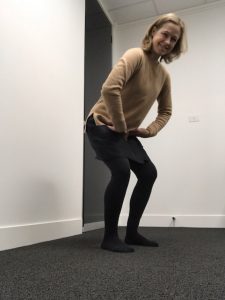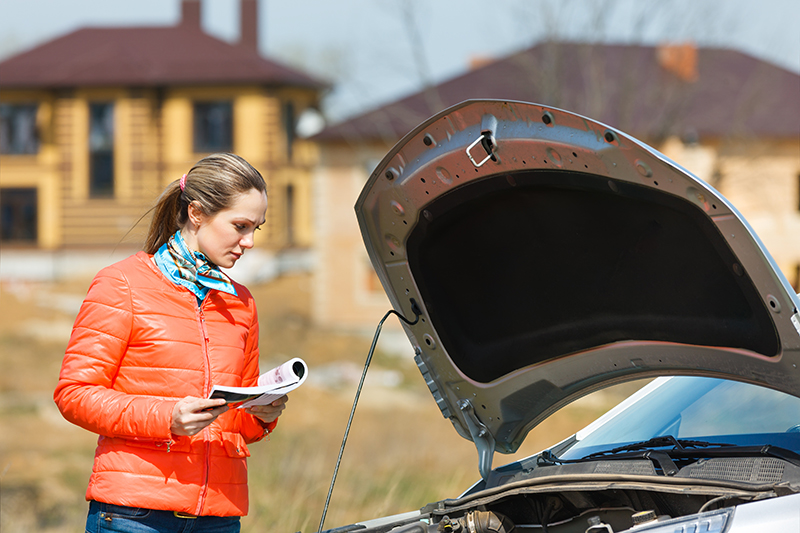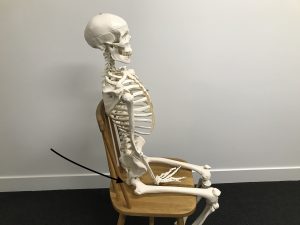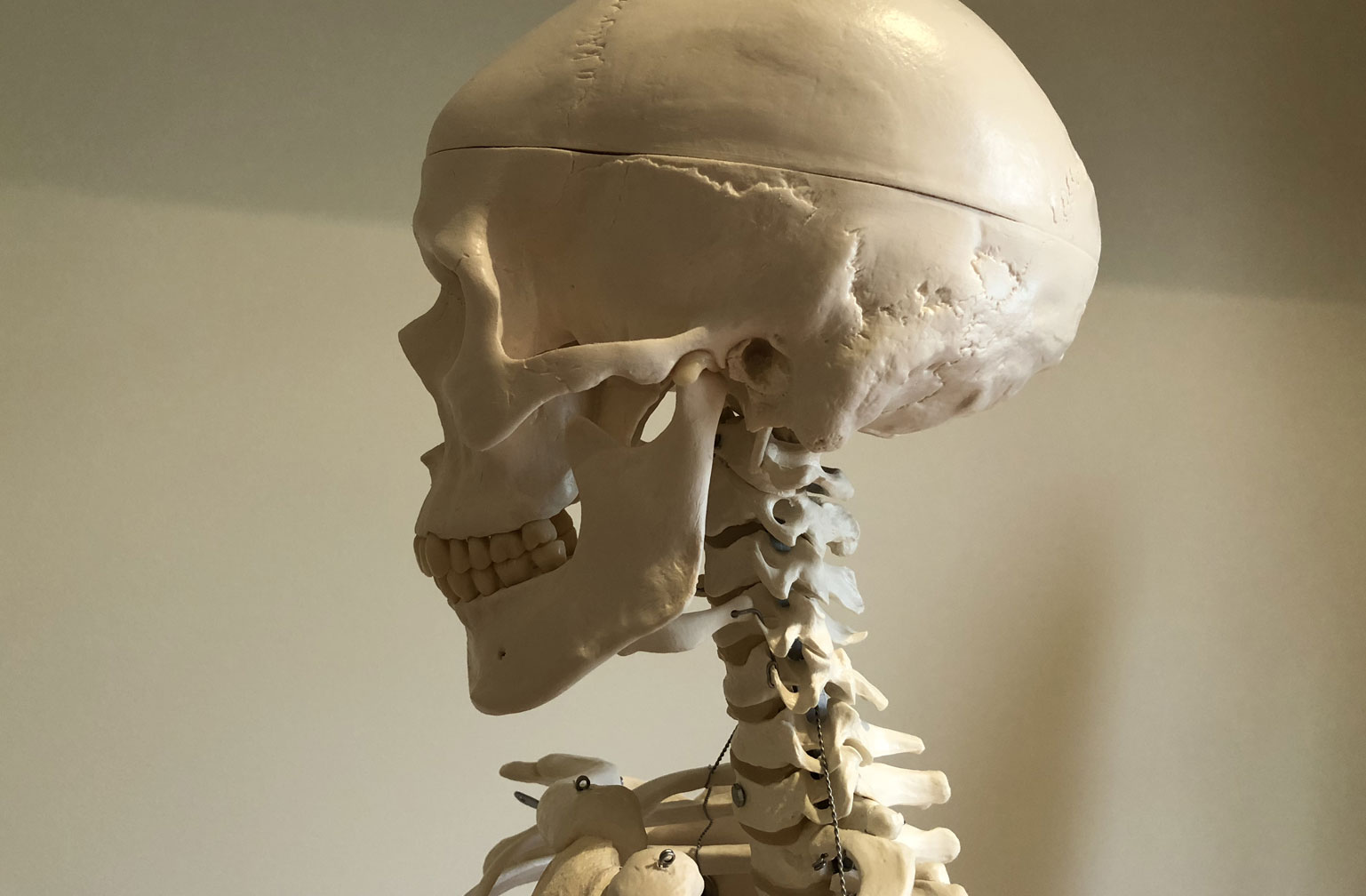There are user guides for everything from cars and kitchen appliances to Smartphones and DVD players but where is the user guide for the human body?
Learning how to move our body thoughtfully can make a big difference to pain and prevention of pain.
I educate people who are suffering from chronic pain on how to move, stand and sit in keeping with their biomechanical design for long term results.
I teach them the ‘user guide’ to their bodies.
Here are some simple ‘user guide’ tips that you can do right now to help reduce or prevent lower back pain.
1. Sit on your ‘Sit bones’.
The pelvis is shaped like a bowl.
The base of this bowl is made up of the left and right ‘sit bones’, officially known as the ‘ischial tuberosities’. The Sit bones are curved in shape so that we are able to rock forwards and backwards over them. Look at the skeleton above. The arrow is pointing to the right ‘sit bone’.
If we slump in a chair, we have rocked too far back off the sit bones, which brings us to rest instead onto the coccyx (tail bone). Alternatively, when trying hard to ‘sit up straight’ (as our Mothers told us!), we rock too far forwards on to the thighs and end up arching the back.
Remaining slumped or arched for any period of time leads to an imbalance of support in front of and behind the spine. Some muscles have to work extra hard while the opposing muscles go to sleep. This results in muscle fatigue, discomfort and ultimately pain – most frequently in the lower back.
You can experiment with this.
Locate your sit bones by placing your fingers directly under your buttocks and feeling for the hard knobbly bump on each side.
Experiment with rolling forwards and backwards off these bumps and then coming into balance with your weight going directly onto these 2 points to give the best support to your spine while bringing the front and back muscles back into play.
2. Sitting with thighs sloping downwards from the hips to the knees.
A lot of ‘ergonomic’ office chairs and school chairs (which are designed for ease of stacking rather than ease of sitting) are backward slanting or soft in the middle so the ‘Sit bones’ (see point 1.) sink into the seat. This logically seems sensible in order allow us to rest into the back of the seat but is actually terrible for the back and hips biomechanically. The knees ideally need to be lower than the hips.
So how do you adapt to the office chair that you’ve been given at work?
2 things can help:
-Either sitting on the front of the seat and raising the seat higher so that you can still rest your feet on the floor but your knees become lower than your hips or
-using a firm seat wedge on the chair to bring your thighs into a forward sloping angle.
3. Ease those knees!
Most people lock their knees back tightly when they stand. This leads to knee strain and a flow on effect with tightening of the muscles in the leg and lower back.
Stand up and notice if this is a habit of yours and then allow a slight easing up of the knees. Your knees don’t need to be bent – in fact, they should become straighter as they are no longer hyperextended. Play around with locking the knees back and then gently unlocking them without bending the knees forward and notice if you feel an increase in ease in the back of your thighs or lower back in response.
4. Bending at the hip joints.

Where are the hip joints?
There is no such thing as a ‘waist joint’ but a lot of people bend in this area where our belts are usually tightened. The spine here is designed for gentle curves, not a big bend right in the middle.
The right place to bend is in fact way further down at the hip joints.
Place your fingers pointing towards you in the middle of the creases of your groin (see photo above) and bend forwards and backwards at this point. By bending at this joint and at the knees while keeping the rest of the back straight, you can protect your spine when bending over to pick up loads.
5. Allowing your feet to take the weight.
Now what does that mean?
Hold something reasonably heavy in your arms (close to your body).
Now ask yourself – ‘What part of my body is holding this weight?’
Chances are you will say, ‘my arms of course!’
However – do your arms have a direct connection with the ground?
No – there is a big space between your arms and the ground.
Now think this instead –
‘The weight is being carried by my feet’.
This isn’t a mind game – it’s actually the reality. The part of your body connecting you to the ground is bearing the weight of the load.
Thinking this way instead – ‘my feet are taking the weight’ and being aware of the increased pressure of your feet on the floor with a heavy load– can often lead to a reduction in strain in the arms as the whole body is allowed to share the load. This equal distribution of weight also helps to ease excess tension in the back.
Postural problems are now being recognized as a large contributor to chronic back pain. For a comprehensive assessment and postural education, book in for a lesson or contact Ruth for further information
Special rate until end July 2018 – first lesson ½ price $35 (usual lessons $70 per hour).








